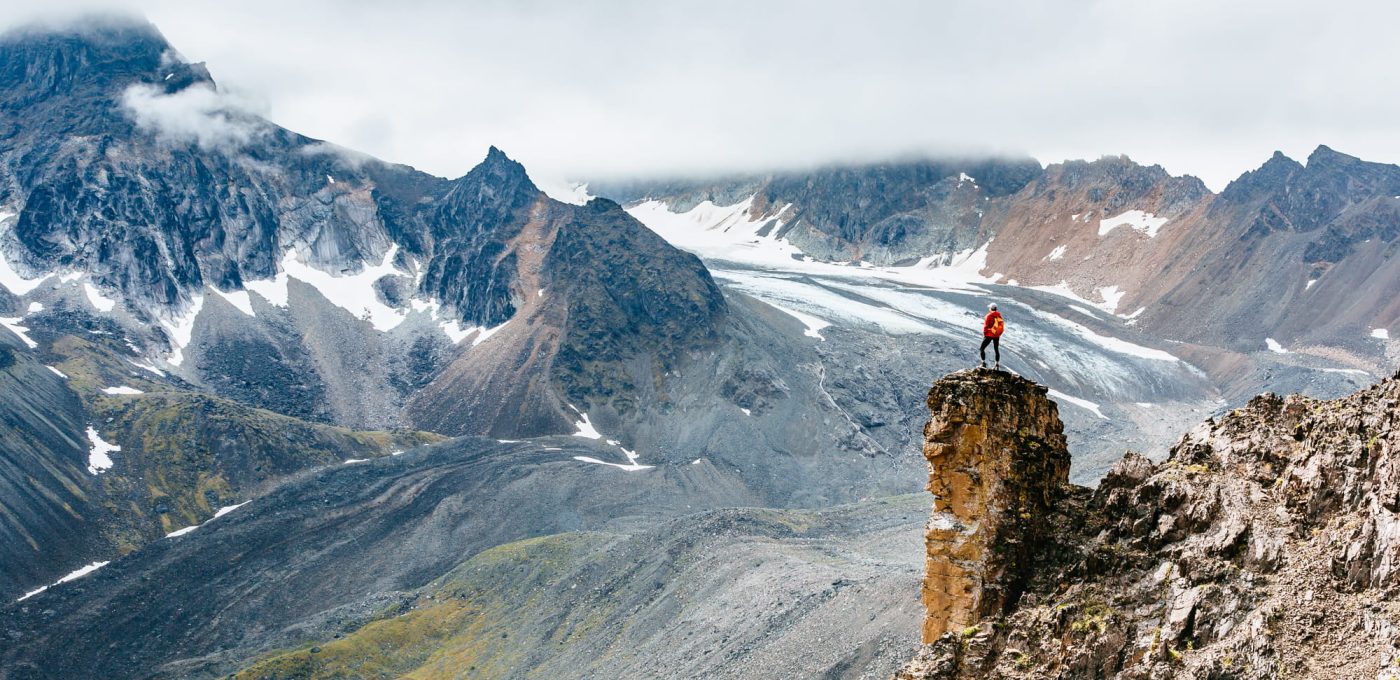Technology on Our Expeditions
Smartphones are becoming amazing backcountry tools! You can find apps for mapping & navigation, communication, and even guides to identify birds, plants, and stars. The cameras are incredible and the conveniences that our smartphones bring to our day-to-day lives are too numerous to list. But are there downsides to having a smartphone on a guided backcountry trip in Alaska? Does Alaska Alpine Adventures have a policy about smartphone use? What about satellite communication devices such as the Garmin InReach? As you plan your trip to Alaska, you may find our thoughts on this topic quite useful.
Our ethic is to embrace the solitude of the wilderness, find a reprieve from the digital bombardment onto our daily lives, and simultaneously utilize the most advanced technology available to make our trips even safer. Our guides carry redundant satellite communication devices (both a satellite phone and a Garmin InReach) to ease transitions into/out of the field, communicate and expedite rescues in the event of an emergency, and preserve the guest experience by filtering messages through our front-office coordinators.
The downsides of technological connectivity on a guided backcountry experience:
- Most of the places we visit don’t have cell coverage, so your smartphone must be paired with a satellite communicator in order to connect to the outside world
- Being connected to the news from outside world distracts from the solitude, the objective of the trip, and the shared group experience
- Should your device(s) get wet, damaged, or lost (all possible in a wilderness setting) they are expensive and inconvenient to replace
- These devices have limited battery life which requires additional power sources that add weight to your pack
- Even with satellite-enabled devices, signals in AK can be spotty and inconsistent communication may needlessly worry your loved ones at home
- Accidental emergency S.O.S signals can put rescuers lives in danger when responding to a false alarm.
- Sharing exact coordinates and live blogging from the field can lead to future overuse and damage to primitive & pristine resources
Recommended best practices:
- Bring your smartphone, but leave the satellite communicator at home.
- Tell your friends, partners, and family you are going to be off-grid! Let them know when you’ll be gone and when you expect to be back. No news is good news around here, so tell them not to worry if they don’t hear from you.
- Have a conversation with you’re listed emergency contact of “what constitutes an emergency”; a family pet getting sick may not be an emergency, but a child going to the hospital is worth interrupting a trip. If they need help deciding or relaying info into the field, our office team will be happy to have a conversation and communicate with the guide team in the field.
- Should you still feel the need to bring a personal satellite communication device such as an InReach:
- Please limit use in the group setting by keeping conversations discrete, private, and away from the rest of the group.
- Don’t let news from the outside affect your experience or that of the rest of your group. Distracting news will limits your judgment and ability to stay present, and is an annoyance for those who are trying to disconnect.
- Weather is weather… don’t challenge your guide team’s decision making based on a weather report you downloaded. Guides balance decisions on many factors!
- Let your guide know you’re carrying a satellite communication device. They will appreciate knowing what resources are available within the group in the event of an emergency.
- Make sure all safeguards are in place to prevent a false S.O.S. signal from being sent.
- Do not live-blog or “over-share” exact coordinates on social media sites. We follow a Leave No Trace Ethics when camping in pristine & primitive areas, and recommend limiting location sharing in order to preserve sensitive wilderness sites from overuse.
- Make sure you have enough backup batteries and/or a solar charging option to keep your device batteries topped-off
- Ensure your devices are stored in waterproof locations.
Personal devices have a place on every expedition but their use should be limited to ensure the success of the trip and to preserve the core values of ALL trip participants. You’ve chosen to participate in a fully-guided experience, so let our guides and our team handle the communication details so that you can thoroughly enjoy the best part of being in the totally immersed in the wilds of Alaska!
